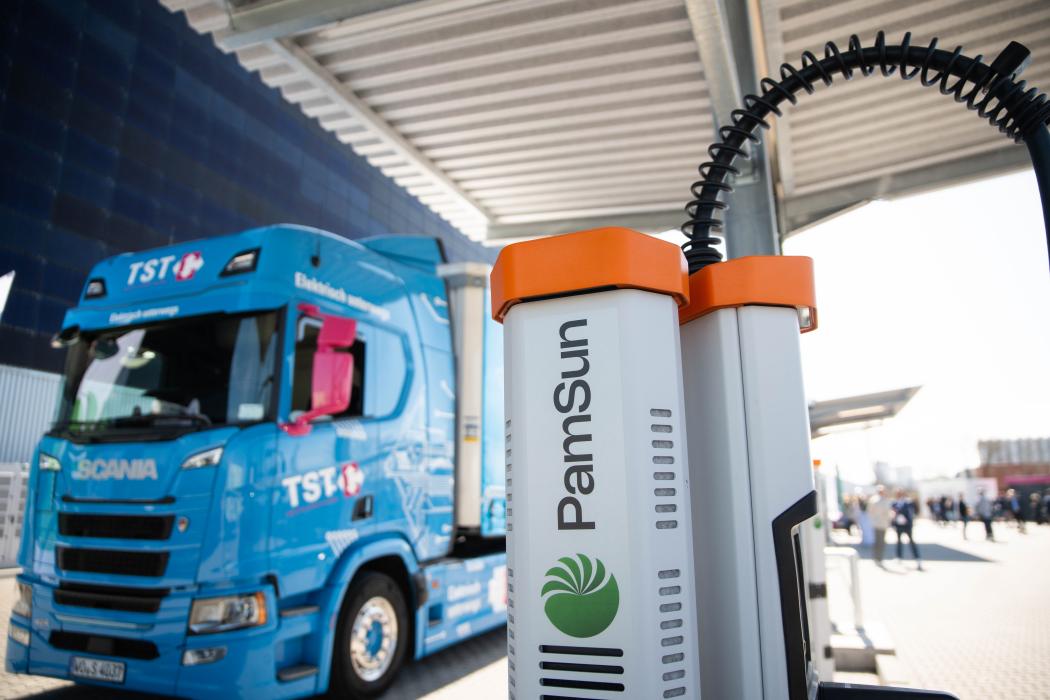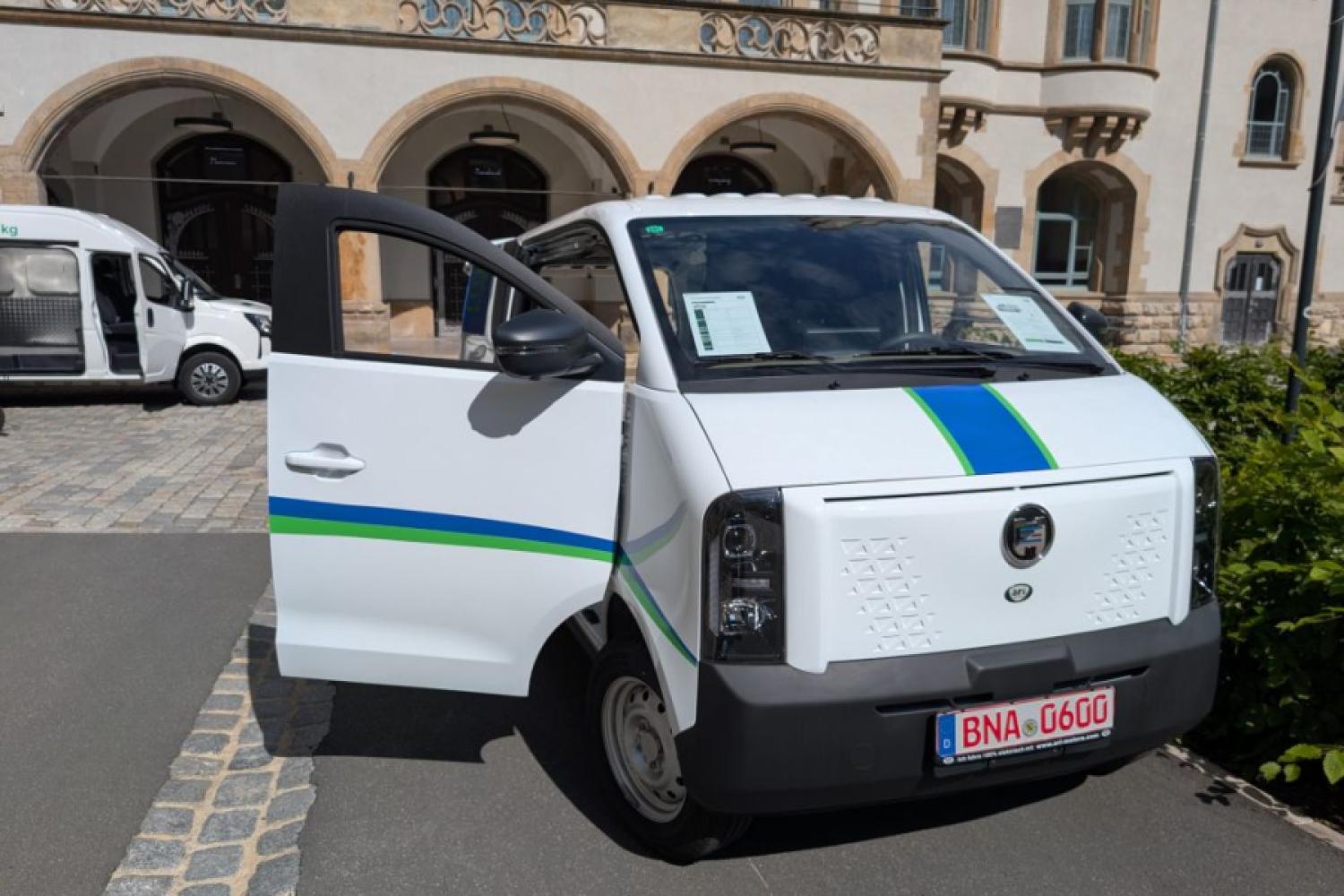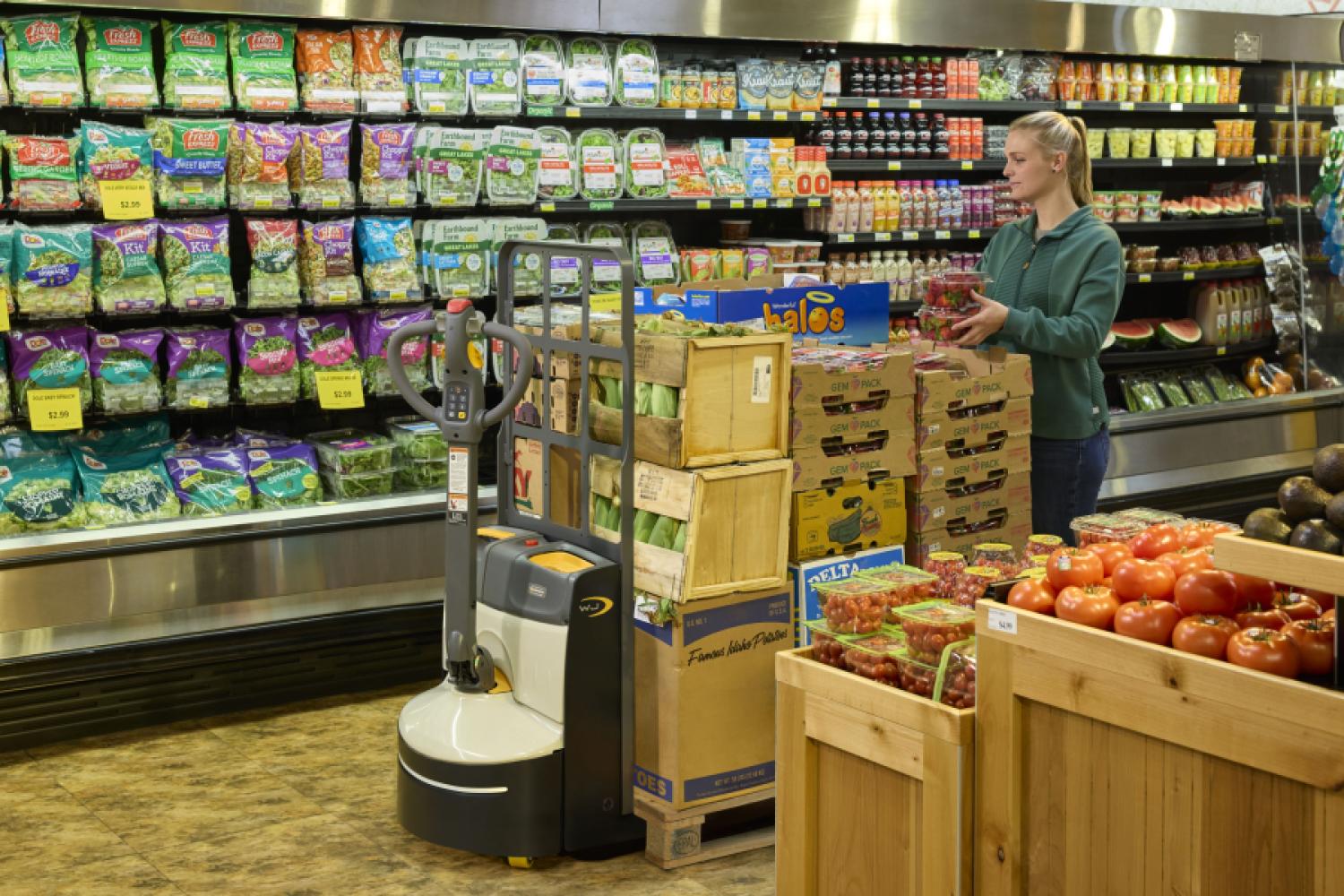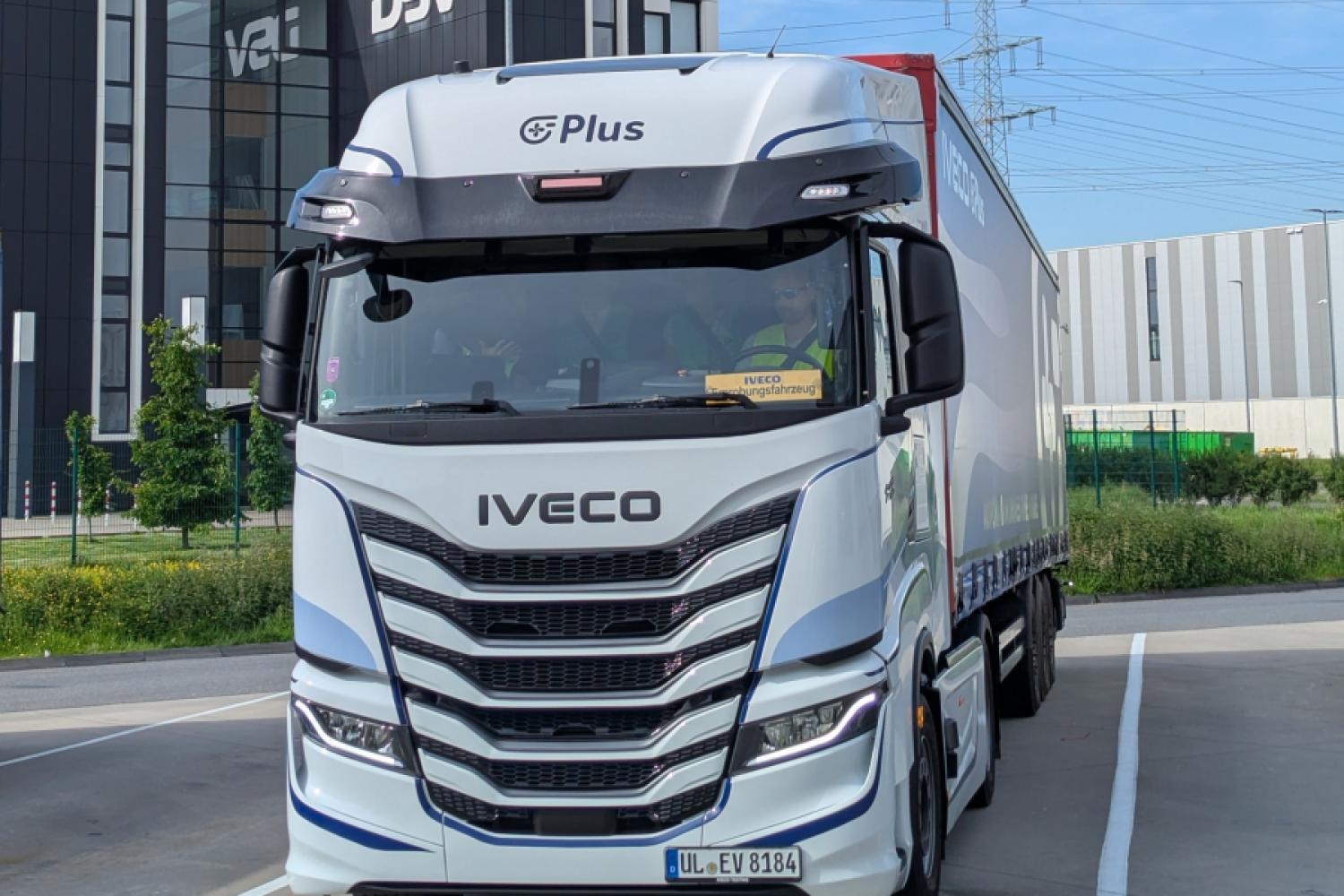The TST Group is initiating a cooperatively oriented depot charging network for truck electrification. Under the motto "by logisticians for logisticians," TST is building an ecosystem for charging heavy-duty vehicles and delivery fleets, aiming to cover all relevant aspects: from digital networking to guaranteed charging prices and unified billing. The logistics service provider announced this on June 3rd at the transport logistic 2025 trade fair in Munich. Transparency and planning security are just as important as sustainability: energy supply is to come 100 percent from renewable sources.
With the establishment of the network, TST is focusing on cooperation instead of competition: Freight companies can join the network to use the infrastructure with their e-trucks or to provide charging points themselves, thereby contributing to the expansion of the system.
"This promotes efficient provision, utilization, and significantly higher utilization of the
charging stations integrated into the network," said Katrin Herda, Head of Energy Solutions and E-Mobility at TST.
There are already eight partners currently using the TST charging infrastructure.
"We are happy to be the lighthouse of the industry – our charging infrastructure is open to everyone," emphasized TST Managing Director Frank Schmidt.
Under the brand name "PamSun," the logistics group TST already operates its first own fast charging park for e-trucks in Worms. The facility has eight charging points (high-power chargers) with a charging capacity of three times 400 kilowatts (kW), three times 240 kW, and two times 160 kW. The charging station is primarily powered by green energy, obtained through TST's own photovoltaic systems (100 percent green energy) as well as grid supply (60 percent green energy). By mid-2026, TST locations in Wevelinghoven (NRW) and Alzey (Rhineland-Palatinate) are
to be connected to the network and additional e-charging points for trucks are to be built.
Drivers for the TST concept are the manifold challenges the transport and logistics industry faces with the mobility transition in road freight transport. According to TST, electrifying vehicle fleets initially presents the transport industry with a whole range of difficulties. The misery is particularly glaring for the charging infrastructure for electric trucks: According to the logistics service provider, there is not only a shortage of sufficiently many stations but also of those meeting the special requirements of truck traffic. For many logistics companies, high prices at public charging points are an additional cost factor, further pressuring the already strained calculations, it said in the statement.
"There is a lack of reliable location data for truck-compatible charging options. Important digital services like reservation systems
are often sought in vain in the truck segment," explained Herda.
The billing systems are also rarely tailored to the needs of fleet operators. Thus, a charging process quickly becomes a logistical obstacle:
"The columns are too low, the area too narrow, turning is hardly possible. In addition, the integration of solar and wind systems is by no means standard yet," criticized Herda. "We have intensively surveyed the market and sought exchanges with many industry players – but so far there is no solution that convinces both technically and economically," she adds.
The cooperative approach developed by TST is now to create a reliable framework in which technical, economic, and operational issues are solved collectively. By autumn, the digital networking of the first depots should be in place, and a platform for the digital management of the charging ecosystem






